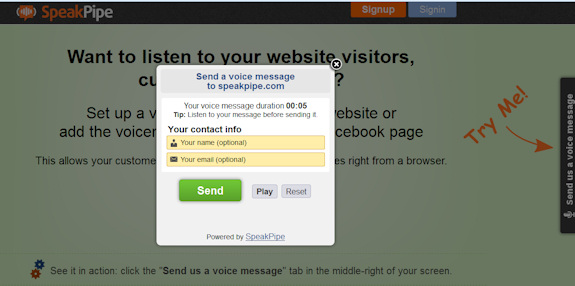Now, they may be out there, but I have yet to run across a library that accepts voice messages via its after-hours answering machine. (I’ve never been clear on whether this was an active choice or a limitation of the answering systems.) I’ve always thought this was rather a shame, especially since libraries often pride themselves on good customer service. But, often, once the library closes, users are left with just the website and the potentially tedious job of typing their need or concern into an online comments box. This is still a huge step up from not being able to communicate at all, for certain–but now there may be a way to step up your library’s customer service even more. What if patrons could leave a voice message–via your library’s website?
A new service called SpeakPipe is making this a reality. It allows you to install a simple widget to your website (or even your Facebook page), and people can simply click to leave a voice message. After the person is done recording, he/she has the option of listening to the message before it is sent, re-recording and can also choose to add a name and email address.

What does this mean to me, Laura?
- The pricing plans are very reasonable (and even the priciest plan–which is probably overkill for most libraries–is less than $40 a month). There is a free option as well, although the storage for messages is only 20 messages a month. All of the pay plans come with a 30-day free trial, so you can road test this before you fully commit.
- All of the options support mobile device support.
- The pay plans include the ability to embed a widget on multiple websites, and on a Facebook page.
- There are also some “pay as you go” plans.
The demo on the SpeakPipe website is easy to use. Give it a shot. What do you think–is this something your library would consider using? Why or why not? Post your opinions in the comments.